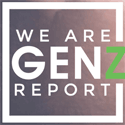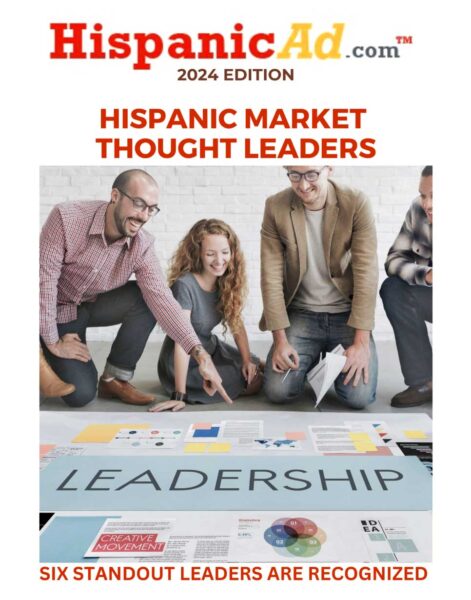 In order to reach millennials, consumer brands have to target more multicultural audiences in their advertising and social campaigns, according to a recent study by Buzz Marketing Group (BMG).
In order to reach millennials, consumer brands have to target more multicultural audiences in their advertising and social campaigns, according to a recent study by Buzz Marketing Group (BMG).
Research
Multicultural Millennial consumer attitudes on advertising and influence [REPORT]
Big Data Doesn’t Need Scientists, It Needs Artists [INSIGHT]
 2.5 quintillion Bytes of data is created every day which would fill 10 million Blu-ray discs. These discs when stacked on one another, would measure the height of 4 Eiffel Towers, per Ben Walker of Voucher Cloud. Companies are scrambling to store all this data and data scientists are now one of the most sought after careers as we try to make sense of all of this data. The potential for big data to solve company, country, and global problems seems infinite. Yet many companies have yet to make sense of the data they are gathering. While Data Scientists are key to structing and analyzing the data, I argue that we will need Data Artists to make the data accessible to the c-suite and beyond for us to take big data beyond the numbers. By Mario X. Carrasco – ThinkNow Research’s Managing Partner.
2.5 quintillion Bytes of data is created every day which would fill 10 million Blu-ray discs. These discs when stacked on one another, would measure the height of 4 Eiffel Towers, per Ben Walker of Voucher Cloud. Companies are scrambling to store all this data and data scientists are now one of the most sought after careers as we try to make sense of all of this data. The potential for big data to solve company, country, and global problems seems infinite. Yet many companies have yet to make sense of the data they are gathering. While Data Scientists are key to structing and analyzing the data, I argue that we will need Data Artists to make the data accessible to the c-suite and beyond for us to take big data beyond the numbers. By Mario X. Carrasco – ThinkNow Research’s Managing Partner.
Making data analytics work for you—instead of the other way around
![]() Does your data have a purpose? If not, you’re spinning your wheels. Here’s how to discover one and then translate it into action. By Helen Mayhew, Tamim Saleh, and Simon Williams
Does your data have a purpose? If not, you’re spinning your wheels. Here’s how to discover one and then translate it into action. By Helen Mayhew, Tamim Saleh, and Simon Williams
Size of U.S. Unauthorized Immigrant Workforce Stable After the Great Recession
![]() There were 8 million unauthorized immigrants in the U.S. working or looking for work in 2014, making up 5% of the civilian labor force, according to new Pew Research Center estimates using government data. The number was unchanged and the share was down slightly since 2009, the year the Great Recession officially ended.
There were 8 million unauthorized immigrants in the U.S. working or looking for work in 2014, making up 5% of the civilian labor force, according to new Pew Research Center estimates using government data. The number was unchanged and the share was down slightly since 2009, the year the Great Recession officially ended.
The Political Consumer [REPORT]
![]() A deep dive into the impact of politics on consumers, and the brands courting them.
A deep dive into the impact of politics on consumers, and the brands courting them.
Biggest Fears About Using Programmatic Buying
![]() According to August 2016 polling by Strata, nearly 60% of ad agency professionals said they were fearful about the inventory quality available when engaging in programmatic buys. And it’s an anxiety that has grown along with programmatic buying itself: In May 2015, only 48.0% were concerned about this. Transparency of inventory was yet another top fear, and it too had grown since May 2015. A little more than half (or 52.7%) of those polled said this was problematic.
According to August 2016 polling by Strata, nearly 60% of ad agency professionals said they were fearful about the inventory quality available when engaging in programmatic buys. And it’s an anxiety that has grown along with programmatic buying itself: In May 2015, only 48.0% were concerned about this. Transparency of inventory was yet another top fear, and it too had grown since May 2015. A little more than half (or 52.7%) of those polled said this was problematic.
Gen Z and Millennials collide at work [REPORT]
![]() In 2016, the workforce is undergoing a seismic change as 3.6 million Baby Boomers are set to retire, one-fourth of Millennial workers will take on management roles and Generation Z (those born between 1994 and 2010) has started to enter the workforce
In 2016, the workforce is undergoing a seismic change as 3.6 million Baby Boomers are set to retire, one-fourth of Millennial workers will take on management roles and Generation Z (those born between 1994 and 2010) has started to enter the workforce
Using Data to Manage Agency Relationships — What’s Important to Marketers [REPORT]
 Research was conducted to better understand how ANA members are using data to manage agency relationships and how learnings can be applied to optimize client/agency performance.
Research was conducted to better understand how ANA members are using data to manage agency relationships and how learnings can be applied to optimize client/agency performance.
Latinos en Power [REPORT]
 As part of its wide-ranging, multiplatform political and electoral coverage, Univision News presents a special digital report that provides a comprehensive overview of Hispanics in public office across the United States over the last two decades: “Latinos en Power.”
As part of its wide-ranging, multiplatform political and electoral coverage, Univision News presents a special digital report that provides a comprehensive overview of Hispanics in public office across the United States over the last two decades: “Latinos en Power.”
Hispanic Boomers report having Positive Outlook on Health
![]() A new survey of Hispanic Baby Boomers conducted by health and well-being company Humana Inc. revealed that despite notable barriers, many Hispanics age 55 or over have a positive outlook on their health and are strongly motivated to stay healthy, with almost half of the respondents reporting they don’t feel old and still have many goals they wish to accomplish.
A new survey of Hispanic Baby Boomers conducted by health and well-being company Humana Inc. revealed that despite notable barriers, many Hispanics age 55 or over have a positive outlook on their health and are strongly motivated to stay healthy, with almost half of the respondents reporting they don’t feel old and still have many goals they wish to accomplish.
Why do consumers pay more?
![]() New research by a Rice University marketing professor debunks a long-held belief by companies that they could charge more for locally produced goods and services because of consumers’ sense of attachment to their community. The study, published in the Journal of Marketing, determined consumers with a local identity will pay more than consumers with a global identity even when a product’s country of origin is unknown.
New research by a Rice University marketing professor debunks a long-held belief by companies that they could charge more for locally produced goods and services because of consumers’ sense of attachment to their community. The study, published in the Journal of Marketing, determined consumers with a local identity will pay more than consumers with a global identity even when a product’s country of origin is unknown.
Nielsen launches TV Out-Of-Home Measurement Service
![]() Nielsen announced that it plans to leverage its Portable People Meter (PPM) technology and panelists to measure out-of-home viewing for national television clients.
Nielsen announced that it plans to leverage its Portable People Meter (PPM) technology and panelists to measure out-of-home viewing for national television clients.
Nielsen Opens CPG Data To Connected Partners On A Broad Scale
![]() Nielsen announced that it will open its Consumer Packaged Goods (CPG) data and insights to third-party analytic companies on a historic and broad scale, with the launch of the Nielsen Connected Partner Program.
Nielsen announced that it will open its Consumer Packaged Goods (CPG) data and insights to third-party analytic companies on a historic and broad scale, with the launch of the Nielsen Connected Partner Program.
Millennials and Generation Z Place High Value on Independence, Dreams, and Self-Improvement
 When asked whether racial issues were improving in the U.S., males agree (strongly/somewhat) at almost double the rate than women did (50% vs. 27%, respectively). Males (36%) were also more likely to agree that politicians are trying to make their lives better when compared to females (20%).
When asked whether racial issues were improving in the U.S., males agree (strongly/somewhat) at almost double the rate than women did (50% vs. 27%, respectively). Males (36%) were also more likely to agree that politicians are trying to make their lives better when compared to females (20%).
U.S. Latinas’ Influence on the $7 Trillion Female Purchasing Power
![]() The Latina SmartPurse is an innovative research initiative focused on the Hispanic female in the U.S. This progressive research takes a deep dive into the modern Latina consumer, her influence, and what she expects from brands when making purchasing decisions.
The Latina SmartPurse is an innovative research initiative focused on the Hispanic female in the U.S. This progressive research takes a deep dive into the modern Latina consumer, her influence, and what she expects from brands when making purchasing decisions.
Young, Connected and Black [REPORT]
![]() African-Americans are exuberant and reflective—optimistic about present-day advances in income, education, entrepreneurship and health care, and determined to forge a better future as influential leaders and catalysts of social awareness against discrimination and social injustice.
African-Americans are exuberant and reflective—optimistic about present-day advances in income, education, entrepreneurship and health care, and determined to forge a better future as influential leaders and catalysts of social awareness against discrimination and social injustice.
Cross-Cultural Generation Z [REPORT]
 Sensis and ThinkNow Research have launched their newest study, the “We are Gen Z Report” – a deep dive into the most diverse generation in American history, Gen Z.
Sensis and ThinkNow Research have launched their newest study, the “We are Gen Z Report” – a deep dive into the most diverse generation in American history, Gen Z.
AHAA Tackles Hispanic Measurement and Modeling Gaps to Improve ROI
 An industry-wide initiative, led by the trade group AHAA: The Voice of Hispanic Marketing, is working with leading measurement data providers including Nielsen, IRI, Comscore and others to assess and recalibrate their Hispanic sampling representation and measurement methodologies. By improving these key metrics, marketers will be able to more accurately measure Hispanic audiences across screens, estimate their purchases and evaluate Hispanic ROI regardless of language or media.
An industry-wide initiative, led by the trade group AHAA: The Voice of Hispanic Marketing, is working with leading measurement data providers including Nielsen, IRI, Comscore and others to assess and recalibrate their Hispanic sampling representation and measurement methodologies. By improving these key metrics, marketers will be able to more accurately measure Hispanic audiences across screens, estimate their purchases and evaluate Hispanic ROI regardless of language or media.
3rd-Generation U.S. Hispanics: Perception vs. Reality [REPORT]
![]() Young Hispanics, who are digitally savvy and culturally connected, are a particularly important audience. To help marketers gain a greater understanding of their interests and perceptions, we partnered with market research firm Ipsos and research partner Audience Theory to survey Hispanics in the U.S., with a specific focus on the third generation.
Young Hispanics, who are digitally savvy and culturally connected, are a particularly important audience. To help marketers gain a greater understanding of their interests and perceptions, we partnered with market research firm Ipsos and research partner Audience Theory to survey Hispanics in the U.S., with a specific focus on the third generation.
The Digital Age: Young Adults Gravitate Toward Digital Devices [REPORT]
![]() As we move further into the digital age, it should come as no surprise that our usage of mobile devices has become ubiquitous. As content consumption continues to evolve, it’s essential to look at the reach various devices have, how often consumers are using them and how long they’re doing so.
As we move further into the digital age, it should come as no surprise that our usage of mobile devices has become ubiquitous. As content consumption continues to evolve, it’s essential to look at the reach various devices have, how often consumers are using them and how long they’re doing so.



























